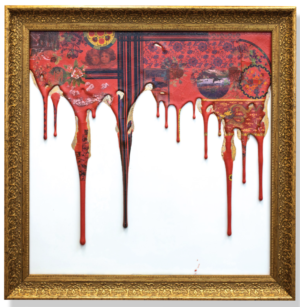Prizes and Awards
|
The IAC decided to create a new webpage focused on prizes and awards won by our members in the context of prestigious international competitions, starting in 2017. This is yet another way to promote contemporary ceramics and contribute to making IAC artists more visible. |
This new webpage will be notably devoted to those distinctions obtained in the context of competitions from partnering institutions of the IAC, such as KOCEF, Mino, Seto, Yingge, Vallauris, etc. Please send your notice to the IAC Office (office@aic-iac.org) which will take care of the publication. |
|
|
|
Prizes and Awards 2024 |
|
|
|
|
The 13th International Ceramics Competition Mino, Japan |
|
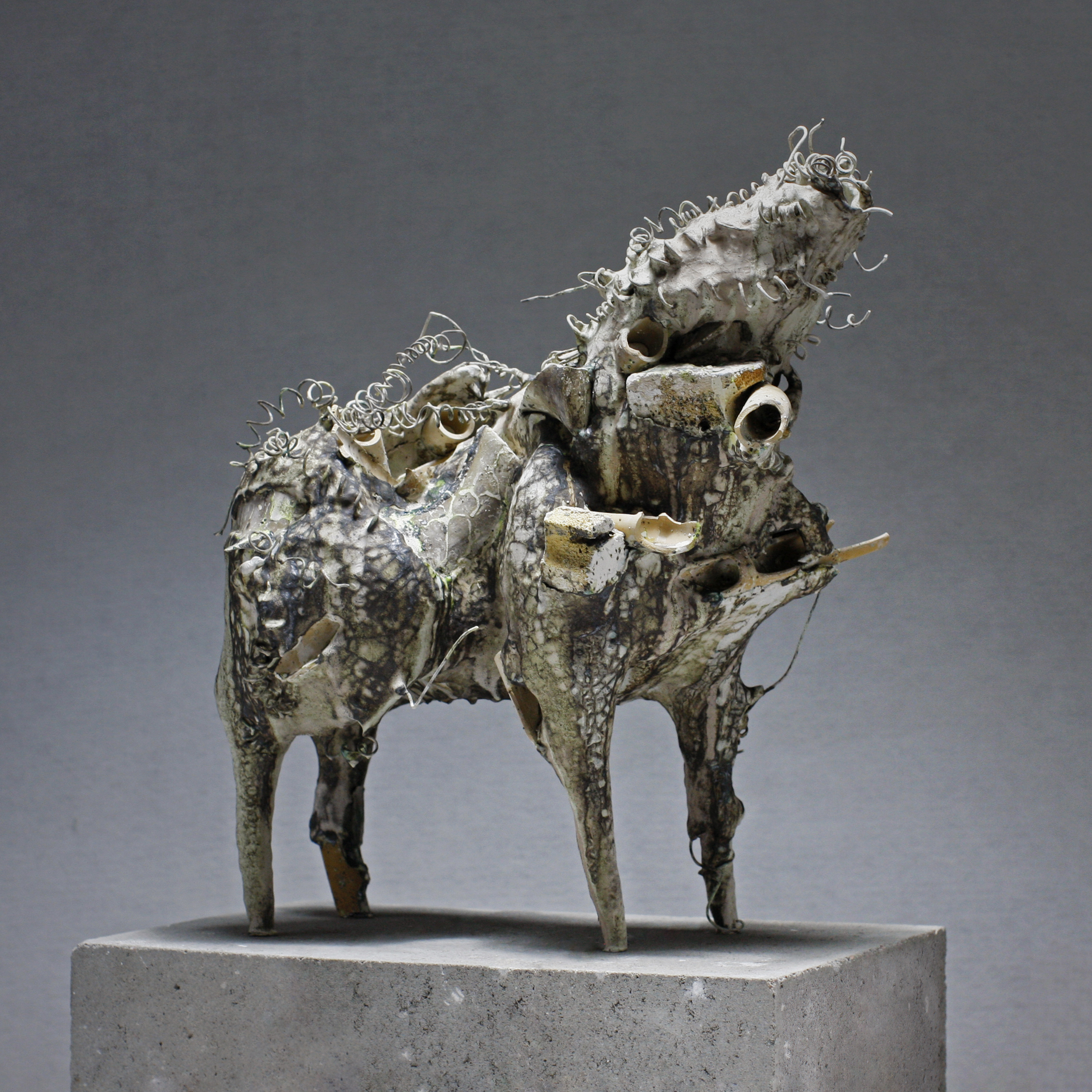 “The Kiln” (2021), clay, glaze, fragments of an electric kiln. Hand-building, 1280°C. |
|
Ielizaveta PORTNOVA – Grand Prix“This work is from my abstract zoomorphic series, which I started in 2018. In the works of this series I use both my previously made objects and objects of other authors. Sometimes I work from scraps of old works or from pieces of sculptures made specifically for the project In the work “Kiln” I used the fragments of my kiln. We made this kiln in 2002. Once, one piece exploded during firing and damaged the kiln. By this time, the kiln had completed more than 500 firings. Fragments of a kiln and heating elements were inlaid into this work. |
The original object has its own character and energy. I use this data to develop the source material into the final image. My task is to visualize the history of transformation of the original object into an abstract zoomorphic figure.” (Ielizaveta Portnova) — Now I feel like this beast assembled from the fragments of the past. The past is valuable but painful. War deprives us of our human appearance. — |
2024 Taiwan Ceramics Biennale |
|
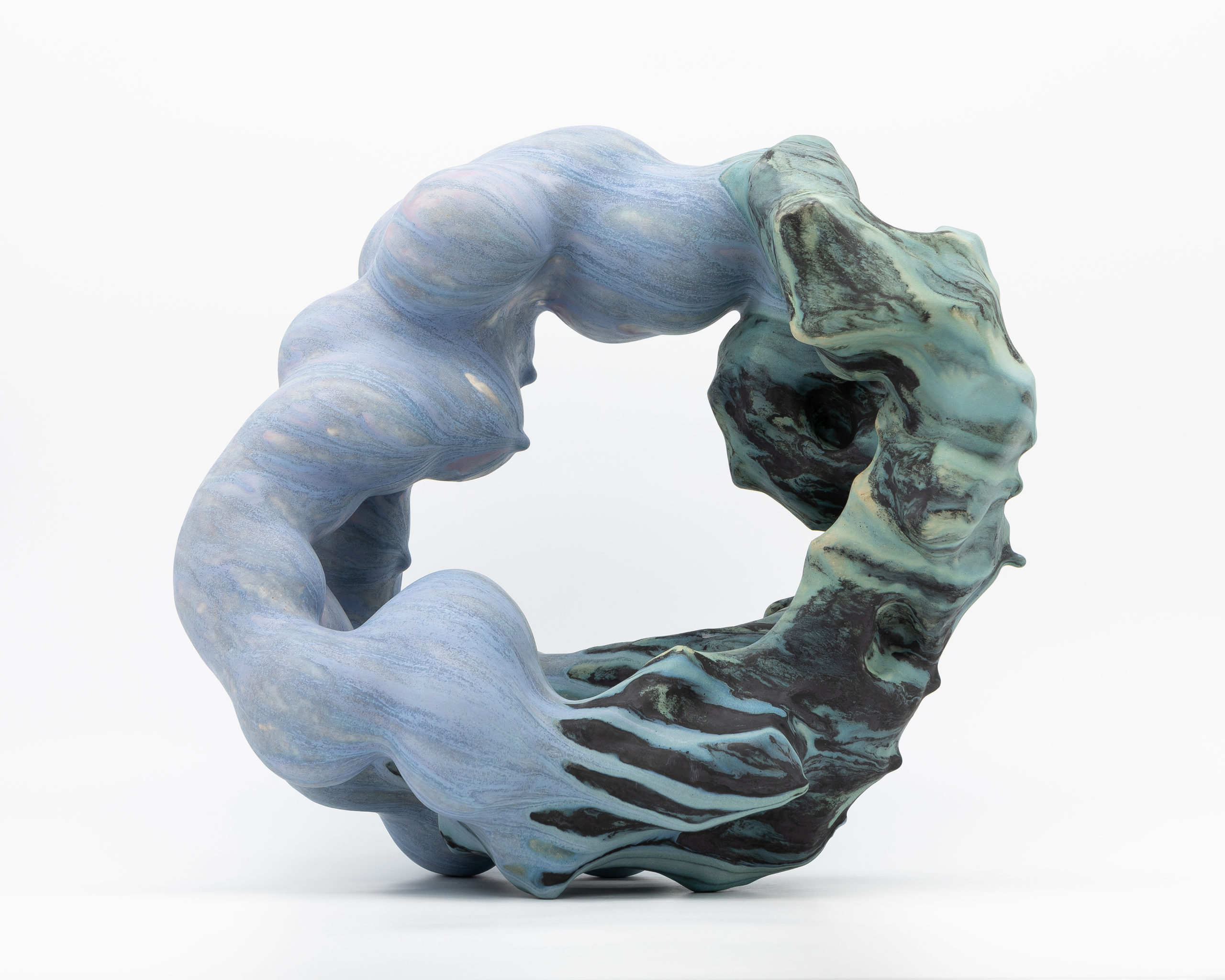 “Loop #12” by Jing HUANG (USA/China, IAC member since 2023) |
|
Jing HUANG – Silver Award‘Loop’ is a series of works that indicate no beginning or end, but places an emphasis on the winding path itself. Amid the dislocation and ambiguity of being neither here nor there, I anchor myself by tracing my past and taking inspiration from the early memory of my hometown (Guilin)’s landscape after a long departure. ‘Loop’ is not only a representation of the actual landscape; it mirrors the feelings of respect and appreciation for my past, culture and tradition. It’s a process of seeking a deeper understanding of my identity and experience in the world. |
Its Chinese title, ‘回,’ has several meanings in Chinese: to circle, to step back, to turn around, to return. This unique pictographic character not only represents the form of the work but also symbolizes the return to the process itself, celebrating my identity, past, and culture. (Jing HUANG) |
|
|
|
5th Officine Saffi Award |
|
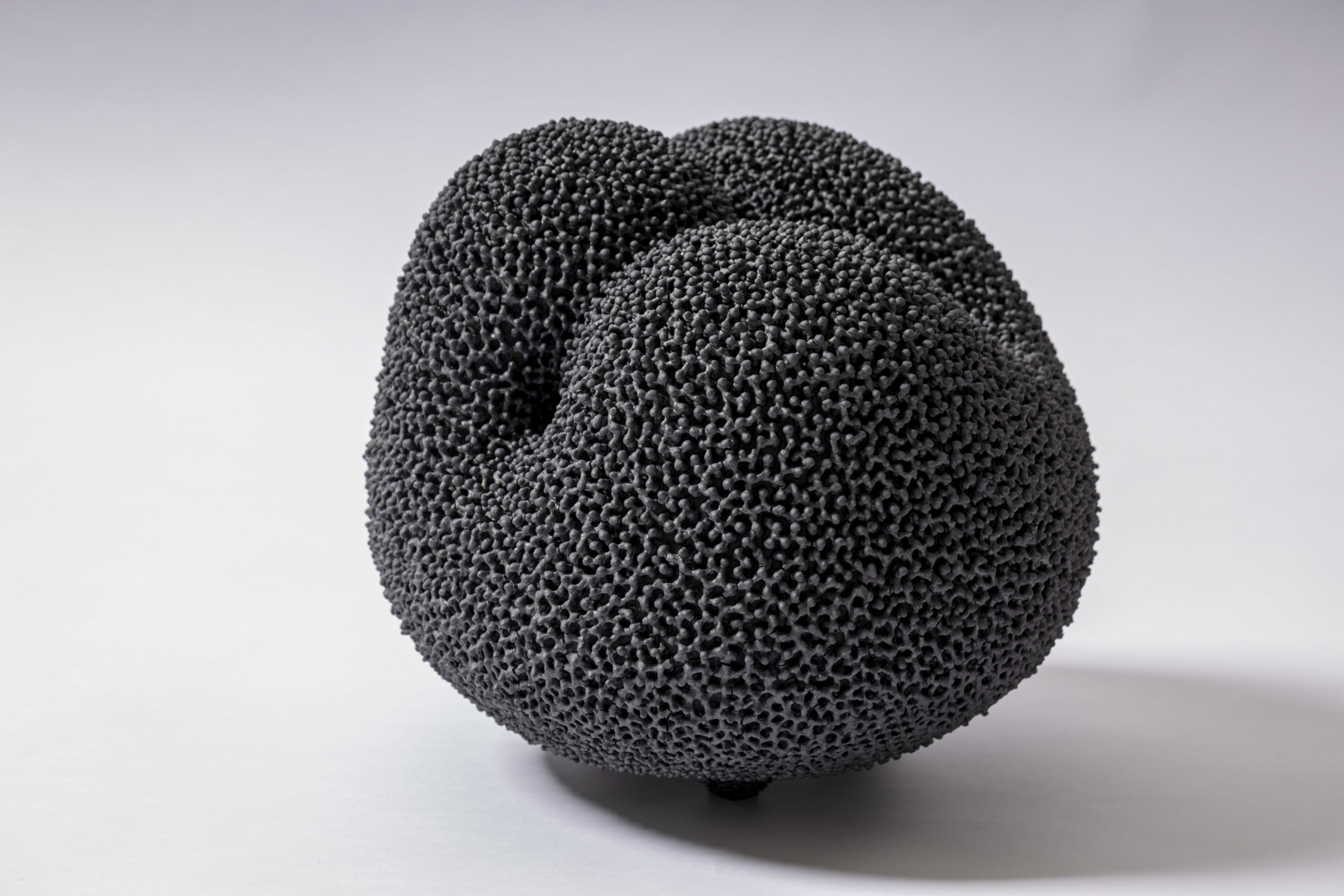 “The Twilight Landscape” (2023) by Hanna Miadzvedzeva (Belarus, IAC member since 2021) |
|
Hanna Miadzvedzeva – Residency Prize Gaya Ceramic Arts CenterThis work is part of a larger series of works called “Landscapes” that I’ve been doing for the last couple of years. In the series, I portray my feelings about the places I visit – new cities and regions, natural places. I especially like observing new landscapes from a bird’s eye view, flying over them with an airplane, when forests and fields alternate with each other to create a unique textural pattern. Also a very important aspect of my perception of the surrounding area is light and the nature of its dispersion in space. Twilight is a very specific state, when in a fairly short period of time there is a transcendental transition from bright day to completely dark night. |
I heard that this period of the evening is considered the most dangerous for drivers because of the so-called “twilight blindness”. Everything around us seems to be wrapped in a gray velvet – on the one hand it creates a soft, calming effect, but on the other hand there is a slight feeling of anxiety deep inside, because we are always suspicious of things that are hidden and not obvious. It is in such a state that even familiar places seem quite changed and begin to be perceived as different, unexplored and full of mystery. To convey my sense of the twilight landscape, I chose a self-contained, curved shape that feels like it’s hiding something within itself. The structure on the surface, applied in several layers with drops of stoneware slip with a rubber syringe, to create an enveloping, soft and even slightly loose effect. The dark gray color of the object is achieved by adding metal oxides to the stoneware. (Hanna Miadzvedzeva) |
|
|
|
Prizes and Awards 2021 |
|
|
|
|
The 12th International Ceramics Competition Mino, Japan |
|
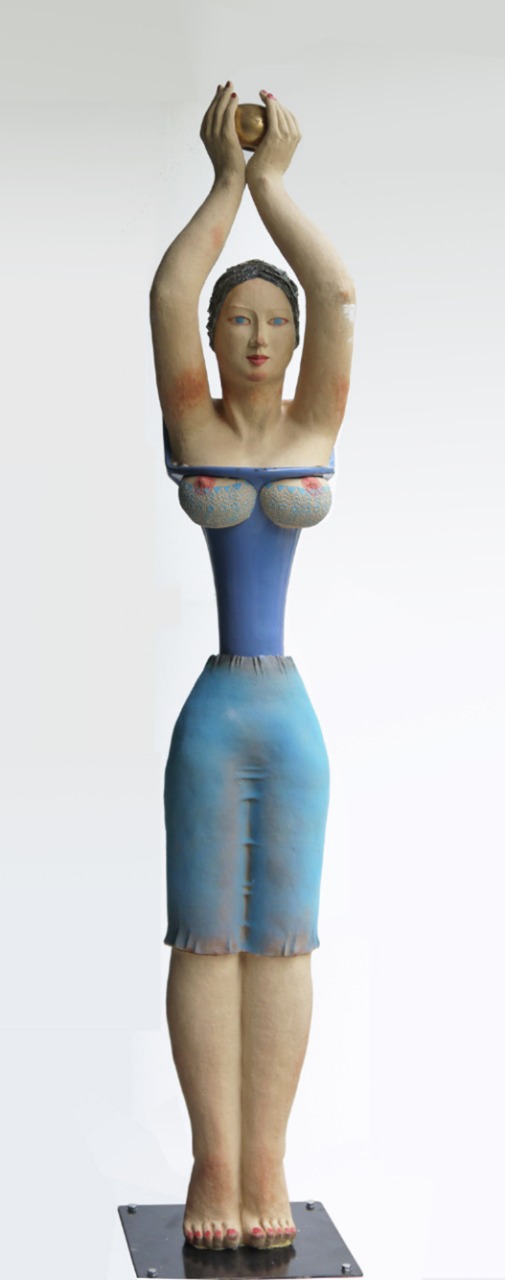 “Life” by Vilma Villaverde. |
Vilma Villaverde – Silver Award“Life”: Recovered after being disregarded and lying underground, a piece discovered in the Shigaraki area comes to my hands. It is a urinal burned in a noborigama kiln, that had been cast aside and buried. |
|
|
|
Korean International Ceramic Biennale (11th Edition) |
|
Darien Arikoski-Johnson – Gold Prize“Consciousness is bound to our physicality much like glaze is bound to clay. With which I explore the relationship between consciousness, physicality, and technology. Nonrepresentational bodily forms influence the size and shape of planar components that reside on them, mirroring how physicality affects our cognitive state. Scanned paintings, which reference memories, are digitally manipulated and fuzzed to the surface. Asking how technology influences our memory, perception, and experience of the world.” (Darien Arikoski-Johnson) |
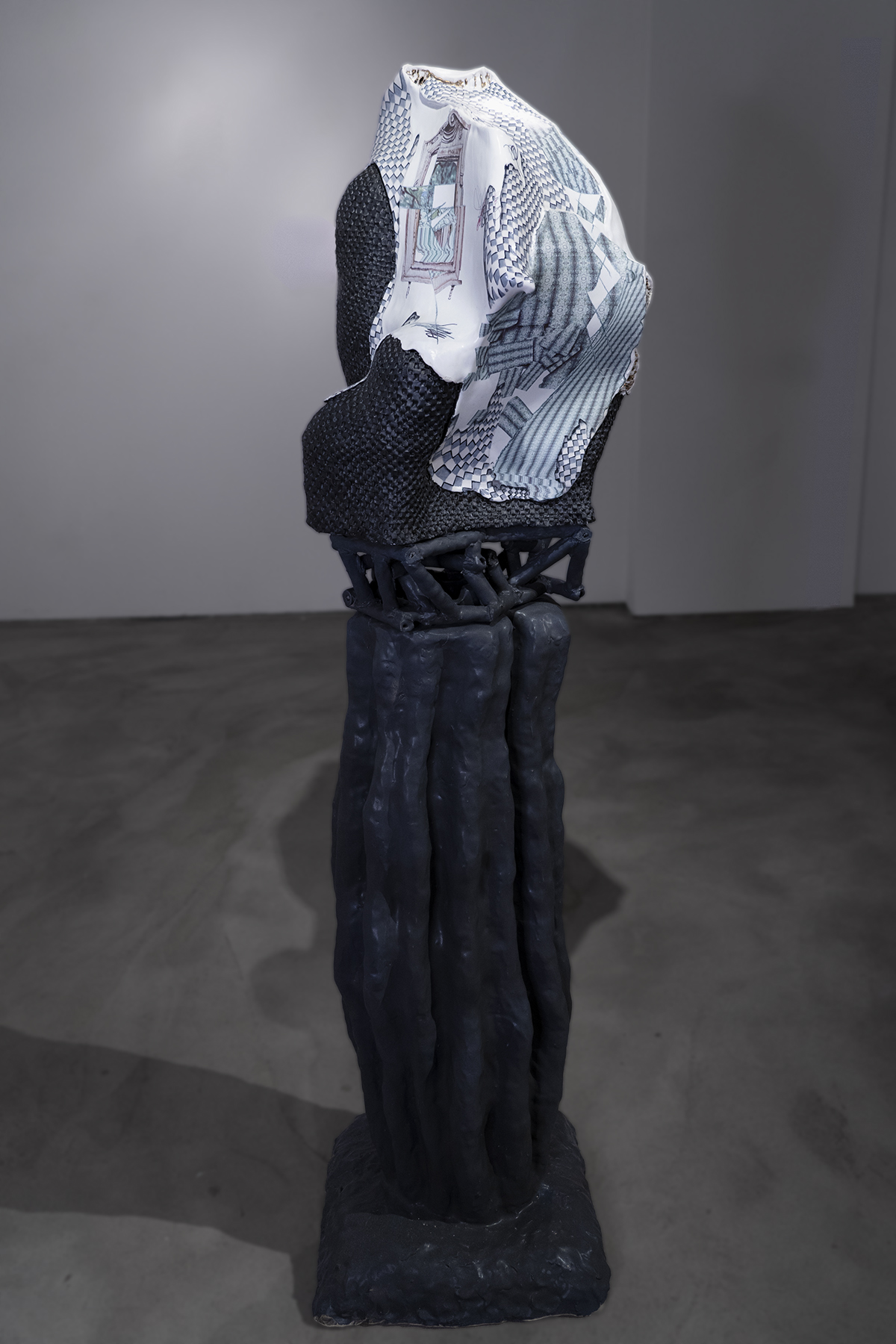 “Fragmented Framing” by Darien Arikoski-Johnson |
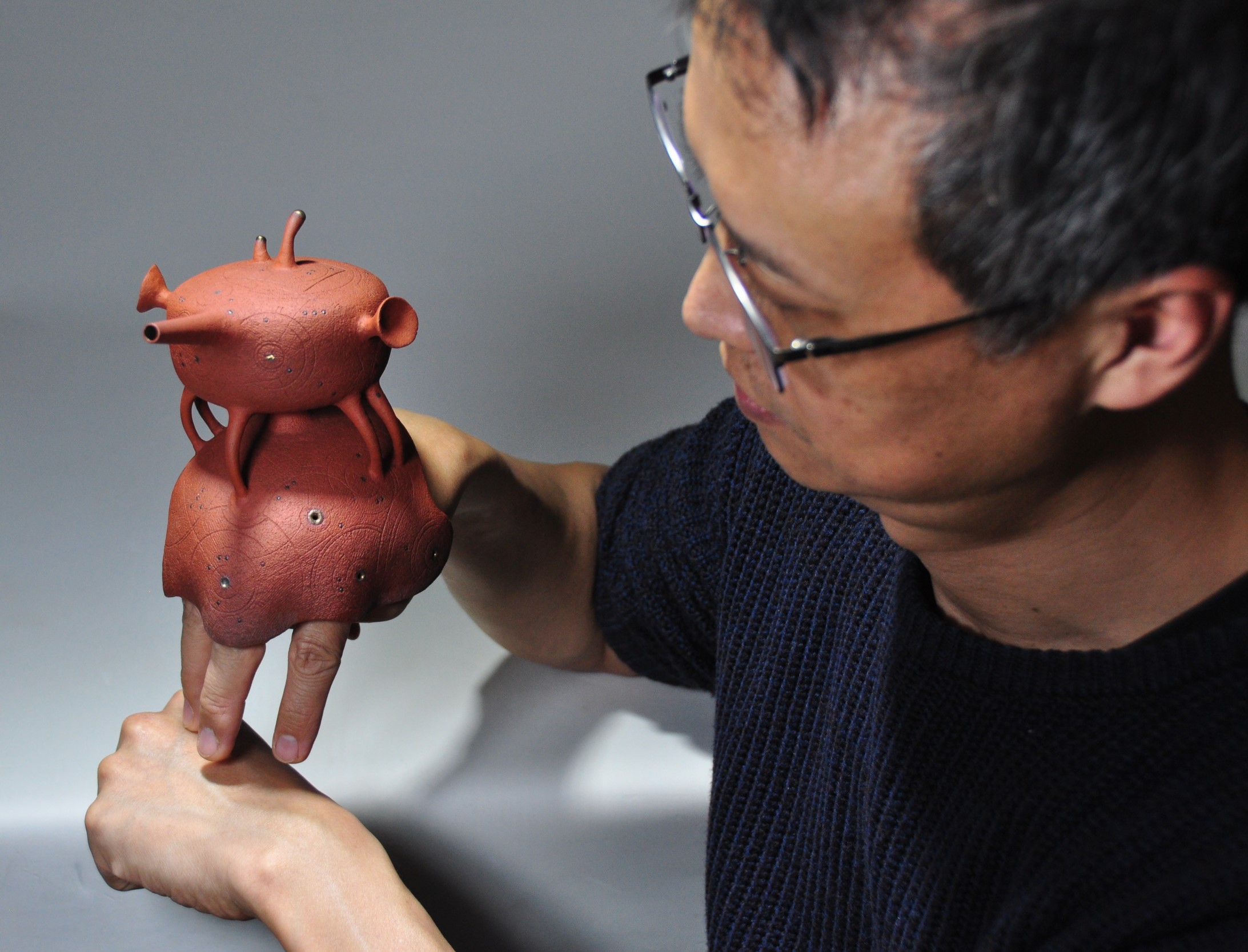 “Homunculus LR” (2020), ceramic and glaze, slab building, by Cho Ming-Shun. |
|
Ming-Shun Cho – Gold Prize“Teapots are not merely objects, but episodes. While they are static functional objects on tables, when people use them the connection between organic and inorganic matter is enriching as interaction generates emotion. While brewing tea, people discover a profound connection with their teapot — akin to human-pet relationships. A close bond is created in the delicate union between a hand and handle, linked by the heat of life in the teapot. I cherish this relationship between humanity and our utensils. |
This symbiosis evolves a teapot’s lifelike characteristics. A teapot and a hand combine to bring out a new life; the hand is a part of the teapot, and the teapot is a part of the hand. This symbiotic relationship is a new relationship between teapots and humans; thus, the teapot has walking feet and emotional motion making them temporal episodes rather than static objects.” (Ming-Shun Cho) |
|
|
|
International Biennale of Artistic Ceramics of Aveiro (16th Edition) |
|
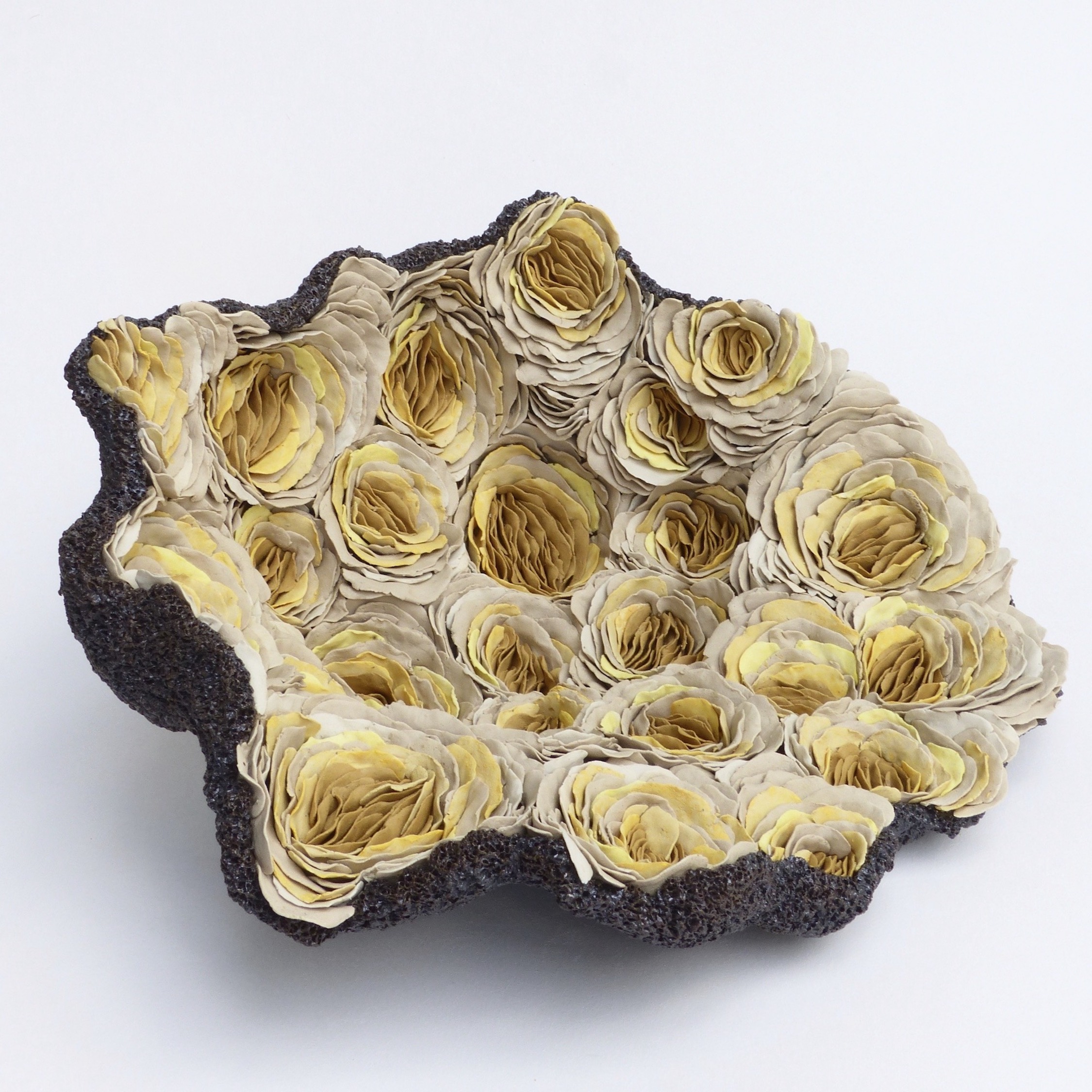 “Big Smile”, 42 x 40 x 21cm, stoneware and porcelain, oxide and pigments, by Ellen van der Woude. |
|
Ellen van der Woude – 1st Place“Nature is of fundamental importance. My sculptures are a reflection of my close observation and connection to the natural world, its resilience and fragility, while also acknowledging lost links between humanity and nature. I pay tribute to the natural world and hope to remind people to slow down, reconnect with nature and contribute to its conservation. |
Working intuitively, I combine different clay bodies and porcelain to create imaginative sculptures reminiscent of sub-marine sea life or blooming flora. Rather than relying on glazes, I manipulate textures, stain oxides and colour clay to add visual and tactile interest. All my work is hand built, therefore all pieces are unique. The Big Smile series were created after a long dark winter. Longing for light and sun I wanted to create something full of happiness and energy, something to make you smile and to remind you of all the good things life has to offer.” (Ellen van der Woude) |
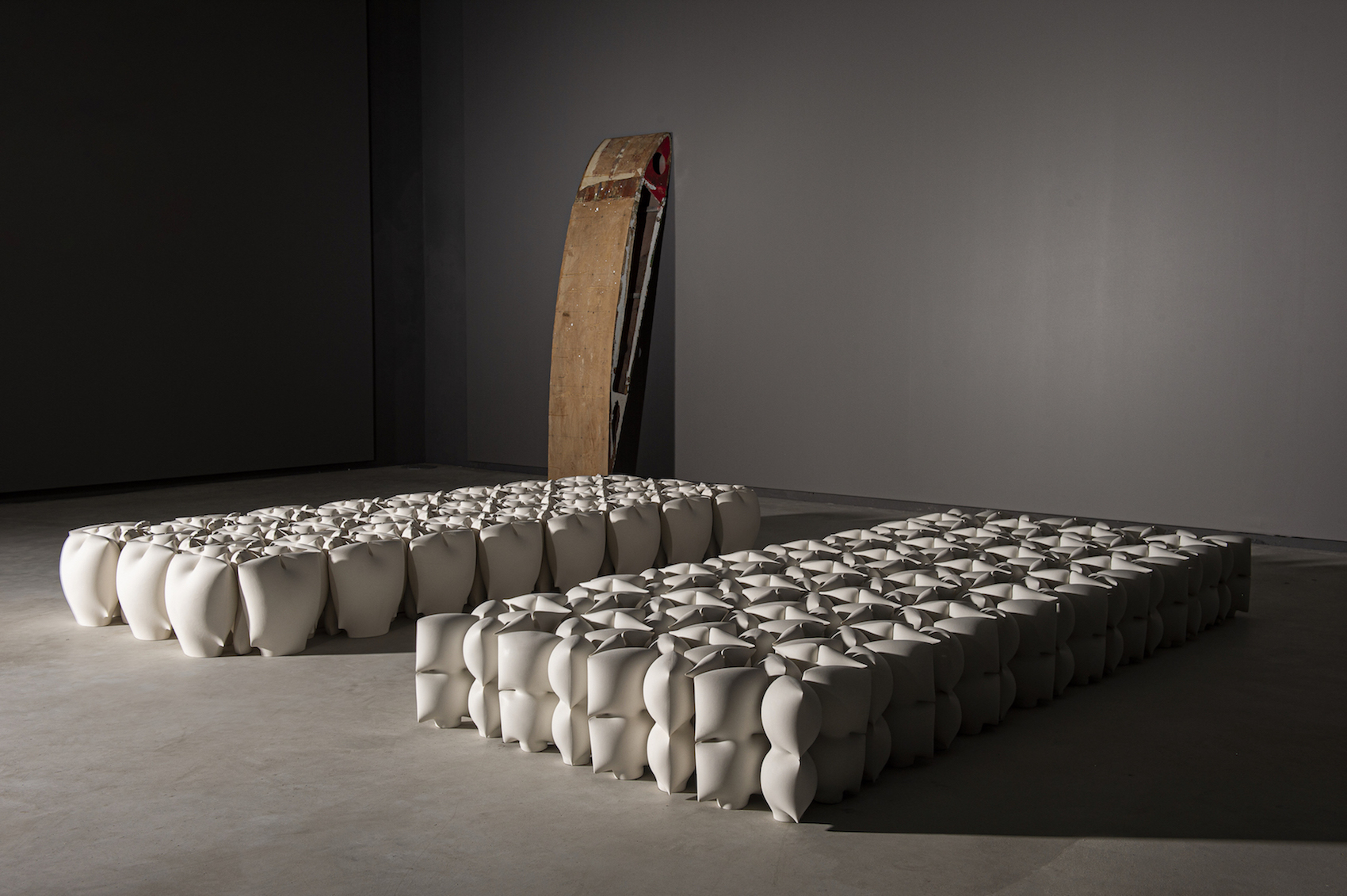 “ETA 24.06” by Marie-Josée Comello. © Eric Smeets – Fotografie |
|
Marie-Josée Comello – 2nd Place” ‘ETA’ is an abbreviation used in the aviation and stands for ‘Estimated Time of Arrival’. ETA 24.06 thus refers to a fictional time of arrival. For this work I was interested in the ‘Meantime’, the moment between waking and sleeping, the twilight zone between daytime and night time. It refers to the inability of holding time, which is elusive when you want to grab it. |
Research about our past and future provides us knowledge to enable ourselves to understand our place in time and space. My search deals with the disturbance of this knowledge, starting from the fascination for fragments; I am curious about the absent parts, the still not finished stories and no less the void that a fragment carries along with it. It is about the boundary between the known and the unknown, the twilight zone. There is silence on the dividing line of meanings.” (Marie-Josée Comello) |
|
|
|
Prizes and Awards 2020 |
|
|
|
|
Taiwan Ceramics Biennale (8th Edition) |
|
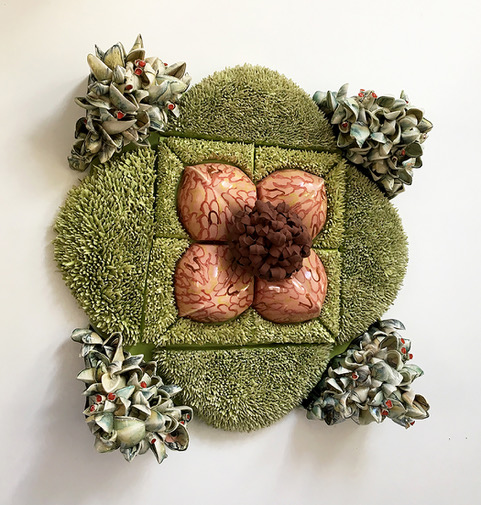 “Contained Chrysanthemum” (2019), porcelain, by Susan Beiner. |
|
Susan Beiner – Grand Prize“Contained Chrysanthemum, is from a series of wall pieces constructed utilizing floral geometry while relying on concepts from stories connected to the history of art. |
Nature and material culture have been subjects of inspiration for centuries. From the earliest times people have found challenge in the natural world. Flowers and their symbology’s are a construction of reality. Art is never a dictation of reality it’s a construction. Nature has its own transcription translated through a filter of our own histories.” (Susan Beiner) |
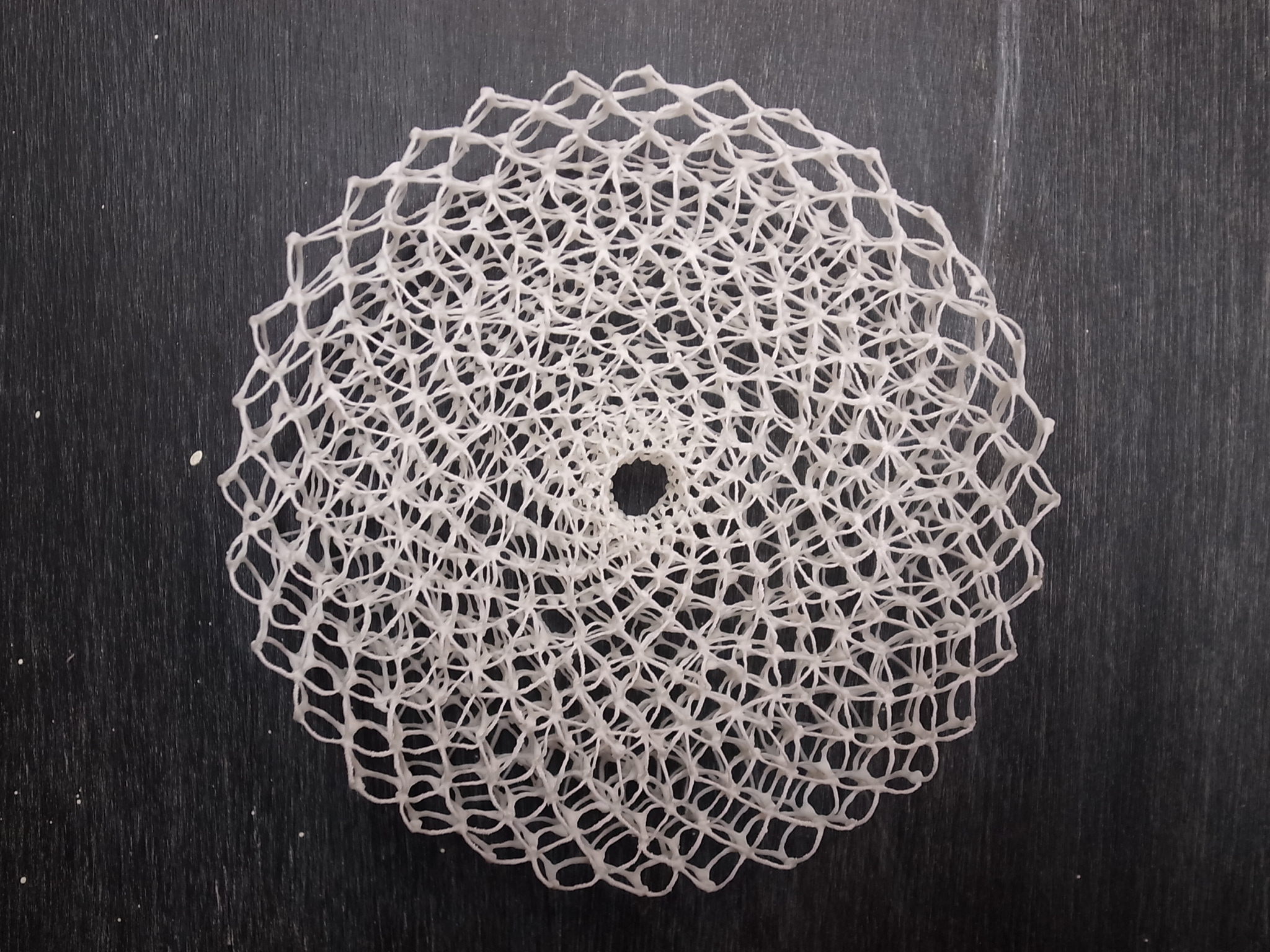 “nwc1904” by Naoki Kato |
|
Naoki Kato – Gold Prize“Pottery is fragile. But that makes it beautiful. One of the pottery’s features is that no matter how hard the material appears, it is breakable. Focusing on this, I have made a ceramic piece which seems like it could be broken with just a touch. |
The bones of vertebrate animals take different forms in order to exercise each motion and function. The skeleton of an animal is an index to represent its animal-ness, its identity. By creating a delicate framework that takes the shape of a vessel, I express the very nature of fragile pottery.” (Naoki Kato) |
|
|
|
Prizes and Awards 2019 |
|
|
|
|
International Biennale of Artistic Ceramics of Aveiro (15th Edition) |
|
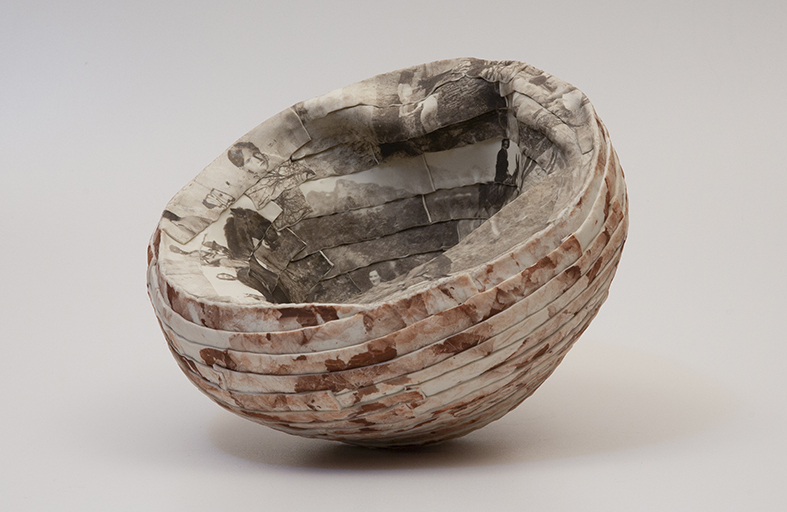 “Come foglie al vento” by Sara Dario. |
|
Sara Dario – First place“Sara constructs her photosculptures like a film director edits a film. She pinpoints the scenes, fixes them onto the ceramic by assembling them into long strips, through which she finally composes a homogeneous narrative. The resulting piece is therefore structured through the articulated overlapping of ceramic strips that evoke the analogue films of old, chaotically piled up films. […] |
At a first glance, the works may appear as ordinary vases, but a closer look reveals the narrative level, made readable thanks to a double vision of the work, internal and external, which guides the observer along the unrolling of the tapes in a circular and ascending way, from the bottom to the top.” (Lorenzo Fiorucci) |
|
|
|
Prizes and Awards 2017 |
|
|
|
|
Blanc de Chine International Ceramic Art Award (1st Edition) |
|
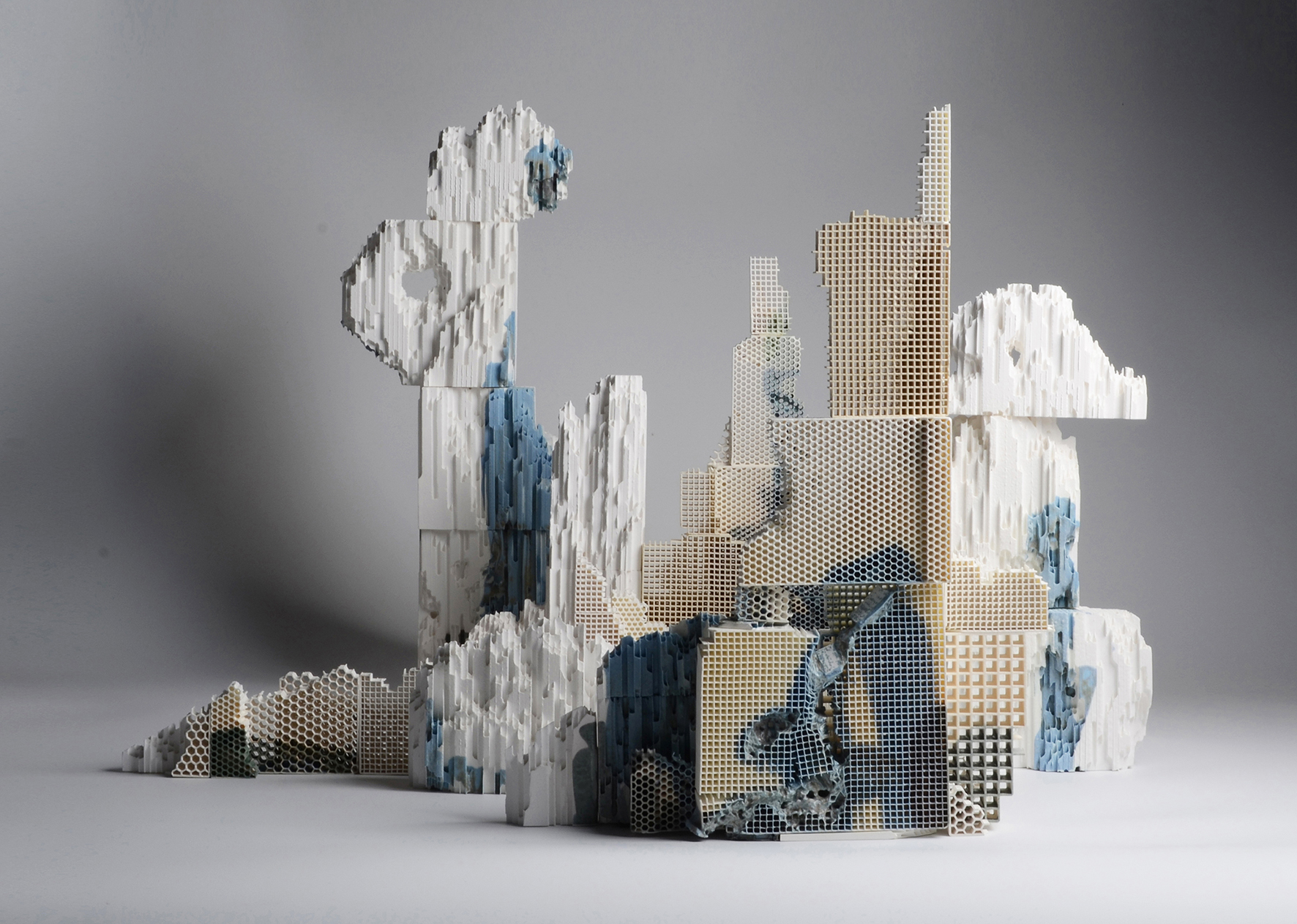 “Remains of mountain and river”, discarded honeycomb ceramics, 2017. |
|
JIANG Yanze – First Prize“This series work is made from discarded industrial honeycomb ceramics, showing the geometric beauty presented by the unique structures of this material. I deconstruct the discarded pieces and collage them in another way, to interpret the natural scenery that are constantly devoured by the urban landscape. |
In the era of industrialization, cities are symbols of the progress of civilization, and at the same time, are the outcome of the continuous separation of man from nature. For every step humanity takes towards civilization, the integrity of nature is chipped away a little. In the city, people strive to recreate natural scenery that have already disappeared. But it leaves only the remnants of mountains and rivers that are in the process of dissolving.” (JIANG Yanze) |
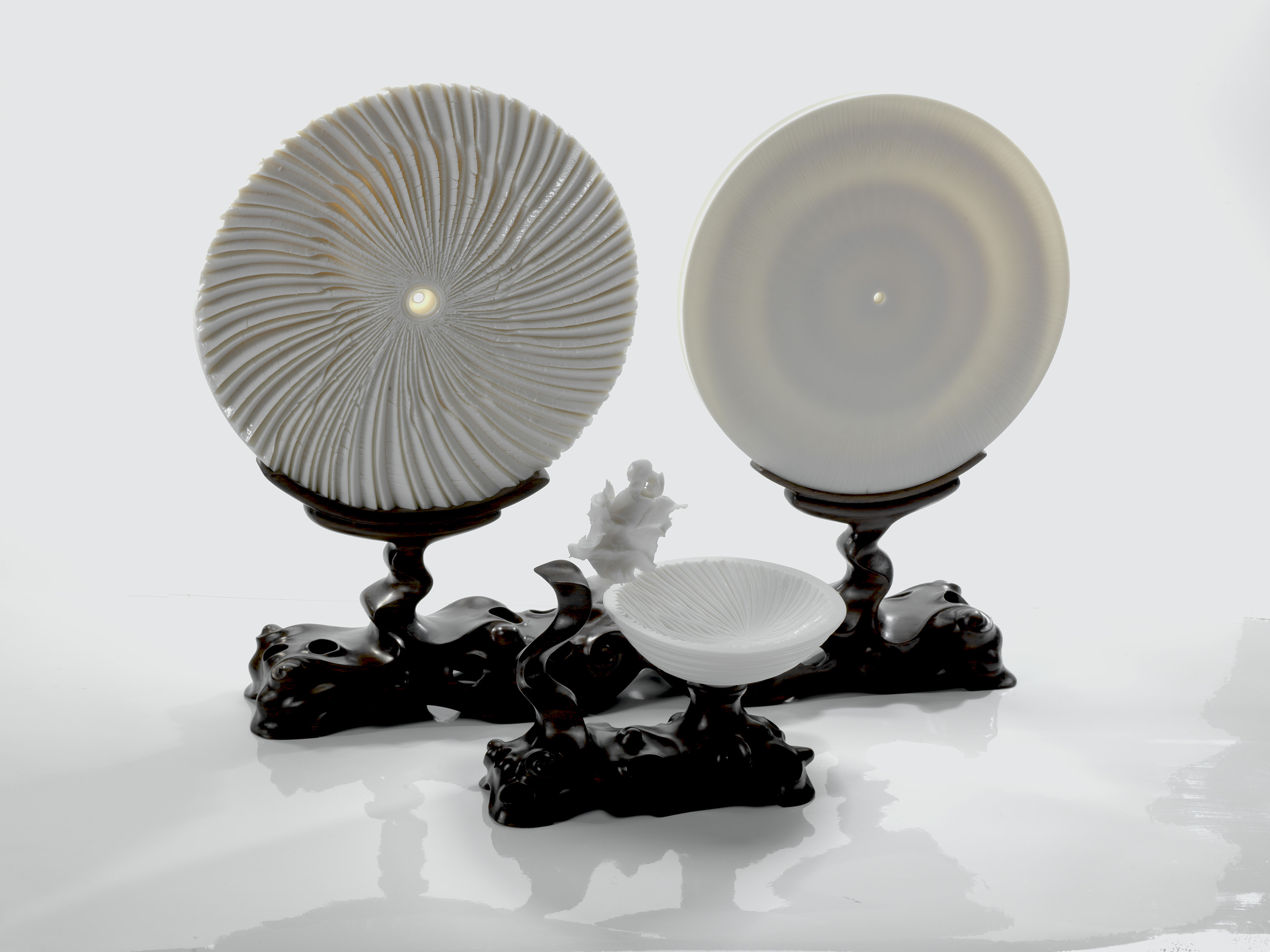 “Esprit / Spirit”, porcelain, carved and turned, 1290 degrees, 2017. |
|
Marc Leuthold – Second Prize“My submission for the Blanc de Chine competition is “Esprit/Spirit.” This sculpture consists of four ceramic objects presented in relation to two wooden bases. The piece is therefore a set unified thematically and in media. Historically, white Chinese porcelains in France were mounted on ormolu bronze bases and in China in the Qing Dynasty on carved wooden bases. My porcelains are presented in a manner consistent with this historical context. The major object of the set is a fluted carved wheel. On the front side of the wheel is a silhouette image of a prototypical female head. On the reverse side is a harder to discern dragon head and a curved tail inspired by Warring States period (475-221 BC) Chinese jade carvings. |
The accompanying vertically presented circular disc resembles somewhat, Bi jade discs with which Chinese buried their dead as a talisman for the departed to enjoy afterlife. In front of these two larger circular forms is a small offering bowl and the impression of the inside of my hand, a source of all my life’s work. “Esprit/Spirit,” made of Dehua porcelain during a Blanc de Chine residency is a representation of different universal energies. The silhouette and dragon are somewhat like Nietzsche’s Apollo and Dionysus energies in The Birth of Tragedy, a controversial work that has been reviled and admired since being first published in 1872. In their oppositional energies, they are simultaneously creative and destructive, and it is this path that the artist must walk.” (Marc Leuthold) |
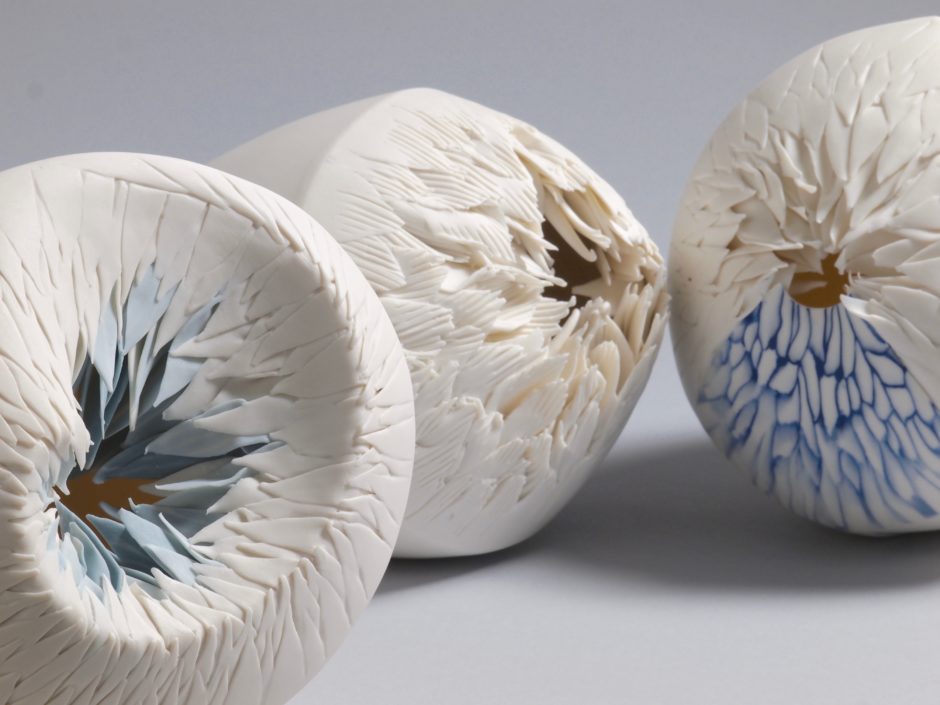 “Sea Flower”. Photo: Raffaele Tassinari “Sea Flower”. Photo: Raffaele Tassinari |
|
Martha Pachon Rodriguez – Third Prize“The artist evokes the interiority of a marine world populated by mysterious and unknown fauna and flora. The lines are pure, enveloping, but the material and technique used are complex. Martha Pachon Rodriguez proceeds by assembling small fragments of earth, shaped by hand with patience and meticulousness. She also plays with openings and perforations. |
She has been inspired by ancient Asian techniques such as Nerikomi style inlays, working with pigmented porcelain. Her use blue evokes the decorations of the Ming period. The creation of these pieces is an event in the form of a journey, which includes a sacred dimension: a magical, cathartic rite, part of an intellectual and conceptual event that requires time and a great deal of patience, skill and joy.” (Claudia Casali, Director of the International Museum of Ceramics in Faenza) |
|
|
|
Cluj International Ceramics Biennale (3rd Edition) |
|
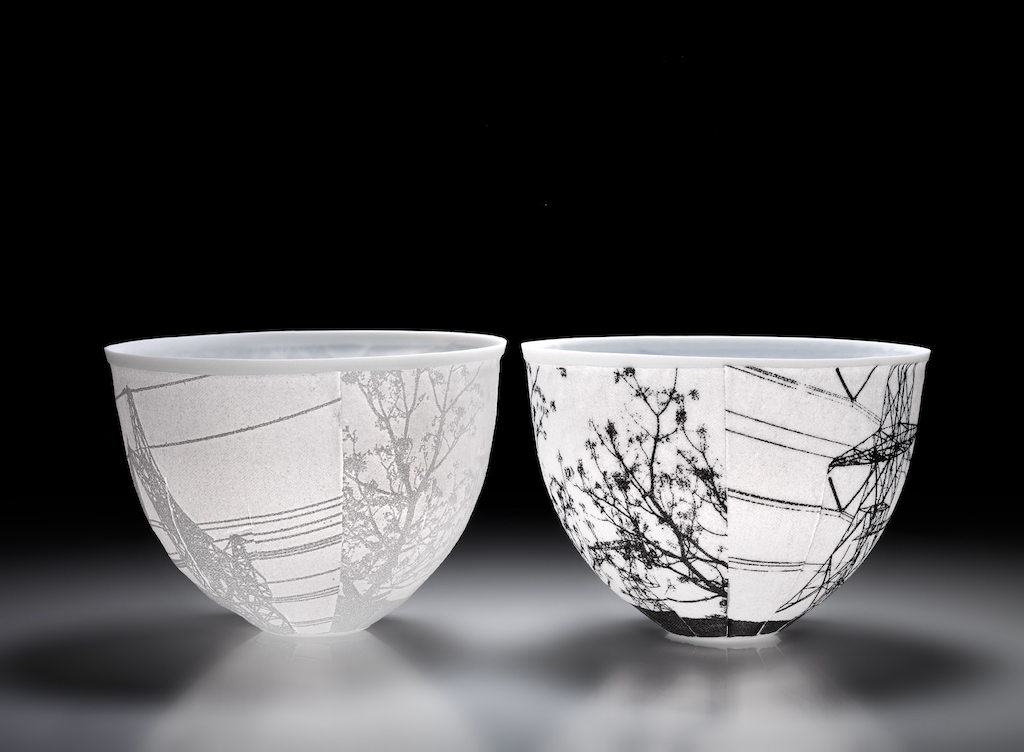 “In-visible cities X”, Porcelain slip casting with print, 2014. |
|
Ömür Tokgöz – Award of Excellence“I like to think about the cities. |
|
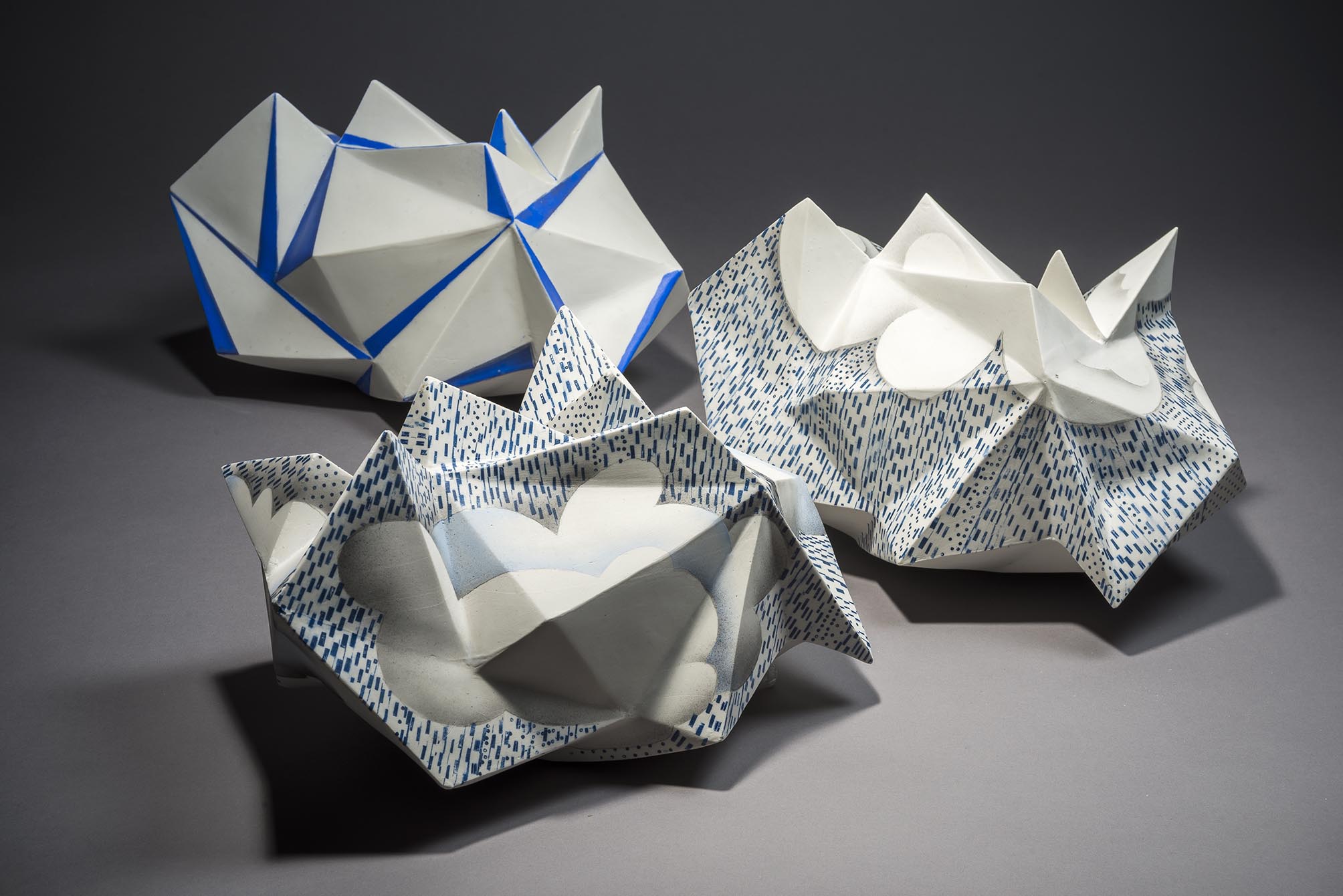 “Mountain”. “Mountain”. |
|
Velimir Vukicevic – Award of Excellence“Art is about creating object that have formula of its own and speak their own language, creating a dialogue that did not exist before. |
Making and painting the clouds over mountains I would like to express the idea of transience, impermanence, movement and changeability as basic phenomena of life. A cloud as easy changing form is floating dream, handy template that provokes our imagination.” (Velimir Vukicevic) |
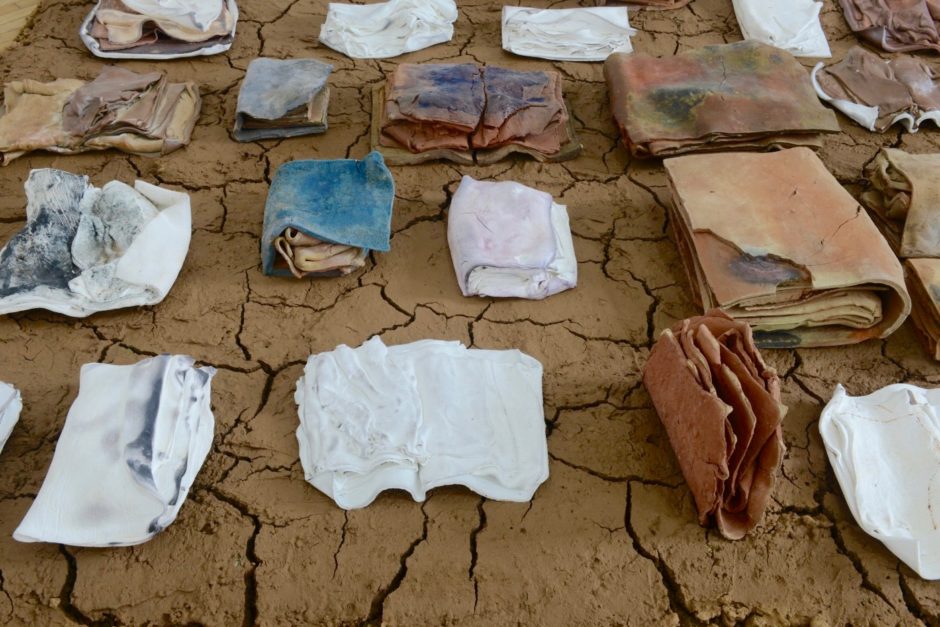 “The Archeology of Memory: Book of Fire”. Photo: Vlad Basarab |
|
Vlad Basarab – Award of Excellence“The installation Books of Fire represents culture as the foundation of civilization, symbolized by the use of fired and un-fired clay in the construction of an archaeological site in the likeness of an archetypal library with ceramic books. I have chosen to reference books because they are historic symbols of knowledge and collective memory. The books are symbolically left unwritten to suggest the absence, forgetting and to inspire the viewer to imagine what they may contain. Books are symbols, instruments of memory. |
From the beginning of history, there has been a strong connection between words and clay, as early forms of writing were on clay tablets. The past plays an important role in my creative process. My role as an artist is to dig through layers of history like an archaeologist in the attempt to recover the loss of collective memory. The notion of historic time and permanence, apparent in the ceramic books, appears in contrast with the fragility of culture and knowledge. In the historical context of the 20th century when ideological and totalitarian systems have led to the mass-destruction of books considered reactionary, the installation brings to attention the human need to save the past through an archaeology of memory.” (Vlad Basarab) |
|
|
|
Korean International Ceramic Biennale (9th Edition) |
|
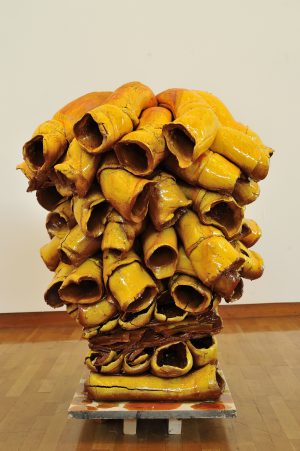 “Tube Sculpture”. Photo: Jørn Hagen |
Torbjørn Kvasbø – Grand Prize“Craftsmanship and materials, hands, fingers and eyes, are playfully coordinated to generate meaningful visual reflections and new knowledge. The formations and surfaces that occur are often disturbing, ambiguous, immediate and overwhelming – both beautiful and repulsive. All are combined to create a readable whole – the encounters, proportions and precision striking a perfect balance: like a killer punch to the solar plexus. The process remains a continuous dialogue between knowledge, practice and cruel critical reflection.” (Torbjørn Kvasbø) |
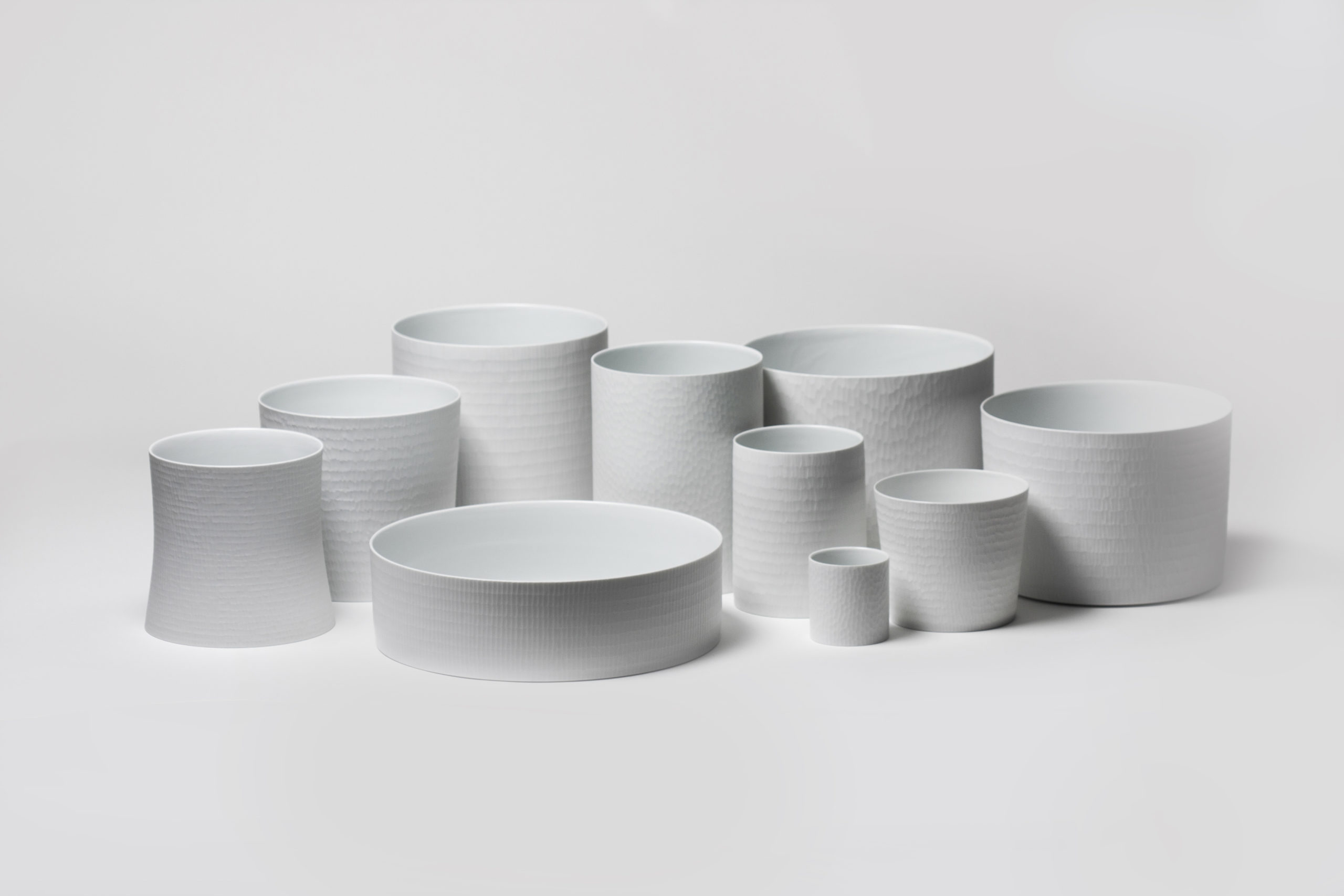 “Whitepoeming , 白色吟遊” “Whitepoeming , 白色吟遊” |
|
Wonjae Jo – Gold Prize“In making Whitepoeming, I focused on individual vessels gathered together in harmony to create one beautiful landscape. |
Seen from a distance, the light and shadow of the curved surfaces of a group of ten white porcelain vessels make the assembly appear as a forest with different types of trees that move calmly and gently as if on the gentle breeze. Such subtle movement reveals yet another aspect of beauty of this work to the viewers through the process of observing and appreciating details of this piece.” (Wonjae Jo) |
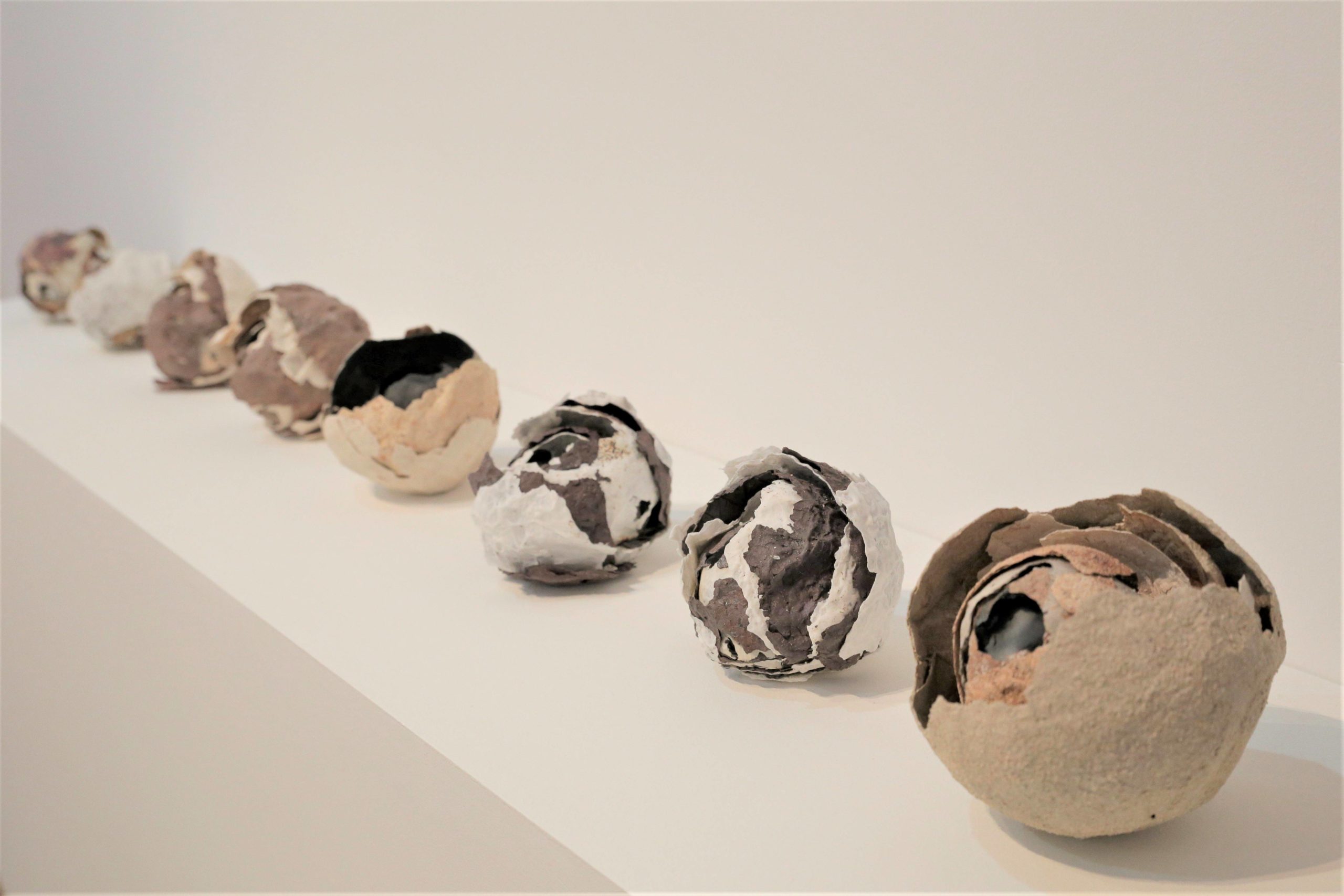 “Excavation” “Excavation” |
|
So Ling Yuen – Silver Prize“ Excavation is both a process of work and a process of artist’s life. In tradition, the broken ceramics is doomed as a fail because of inadequate experience and skill. My artwork, on the contrary, is a breakthrough as “broken” is my choice in order to form a sculpture. |
My practices of shaping layer by layer of high-fired ceramics creates the distinct structure that not only defines my artwork but also breaks through the traditional pattern.” (So Ling Yuen) |
 “nwc1601” by Naoki Kato. |
|
Naoki Kato – Prix en Bronze“Pottery is fragile. But that makes it beautiful. One of the pottery’s features is that no matter how hard the material appears, it is breakable. Focusing on this, I have made a ceramic piece which seems like it could be broken with just a touch. |
The bones of vertebrate animals take different forms in order to exercise each motion and function. The skeleton of an animal is an index to represent its animal-ness, its identity. By creating a delicate framework that takes the shape of a vessel, I express the very nature of fragile pottery.” (Naoki Kato) |
|
|
|
International Biennale of Artistic Ceramics of Aveiro (14th Edition) |
|
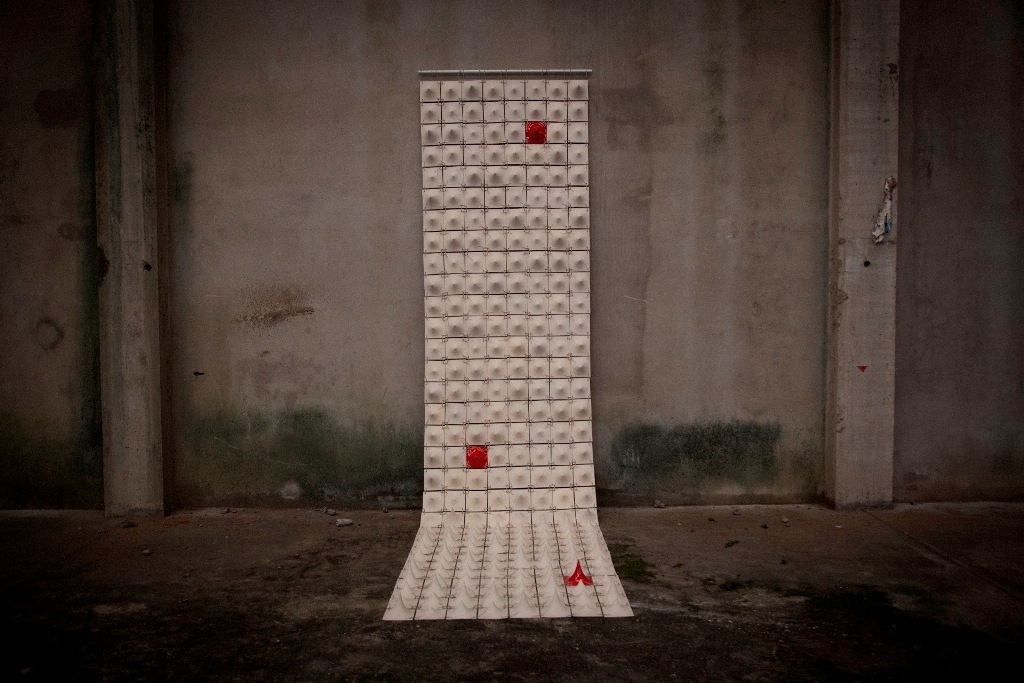 “A Long Walk to Freedom”, white stoneware, moulds, 1280 degrees, 2016. “A Long Walk to Freedom”, white stoneware, moulds, 1280 degrees, 2016. |
|
Yola Vale – 3rd PrizeLong Walk to Freedom is one of the boldest works in the “Fragmentos Suspensos” series. Ambitious in composition and size, the work seeks to reflect the harsh reality faced by refugees from around the world on their long journey to a safe haven. Those fleeing conflict, hunger, extreme desolation; they venture on a thorny path where hope is the only motivation.
|
A path that is a shot in the dark, a Russian roulette where life is gambled, because to stay is to know that it is already doomed. A work that simultaneously intends to serve as an analogy for the life of each of us, more or less easy, but always with obstacles on the way that we intend to make more human. As Fernando Pessoa said: “Stones on the road? I’ll keep them all, one day I’ll build a castle”. Yola Vale has built a rough sea, a winding path, a labyrinth of subterfuges, a call to consciousness. |
|
|
|
Members
Find a complete list of current members of the Academy here.
(read more...)IAC Awards - Themed Members Exhibition 2018
To honour the Academy members' works, the IAC Executive committee awarded 4 prizes.
(read more...)

